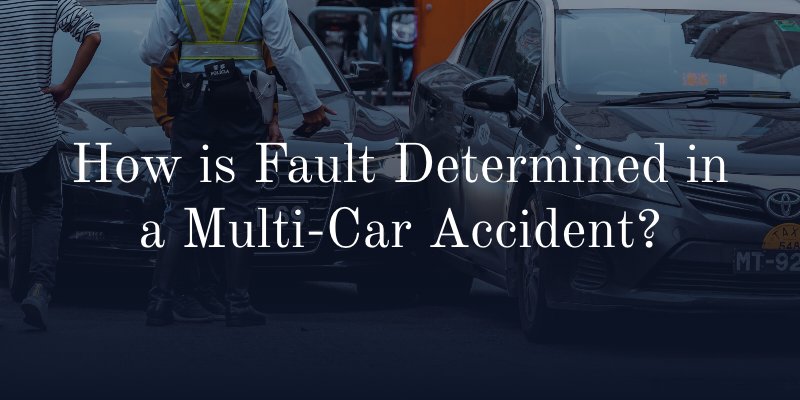How is Fault Determined in a Multi-Car Accident?
The reality is that multi-car accidents – or chain reaction car accidents – can be complex. Often, there is more than one driver that is at least partially at fault. However, there are some key facts that can help determine who is most responsible for the accident, and ultimately, who should be held liable for the damages.

Location of Impact & Extent of Damages
One of the first things insurance adjusters and lawyers will look at is where each vehicle was impacted. This can give them a good idea of which driver was most likely at fault. For example, if Vehicle A has damage to only the front of their vehicle, and Vehicle B and Vehicle C have damage to either the back or both the front and the back, it’s likely that the driver of Vehicle A will be found at fault for the accident, as this points to Vehicle A rear-ending one of the other vehicles. Additionally, the severity of damage to each vehicle can also help to determine fault.
Speed & Skid Marks
Another important factor in determining fault is speed. All else being equal, the faster a driver was going, the more likely it is that they will be held responsible for an accident. This can be difficult to determine, but can be evidenced through eyewitness testimony, video footage, or an accident reconstructionist in some cases.
Skid marks can also provide clues about what happened and who is at fault. Depending on where the skid marks are and the intensity of them, this can indicate when and if the driver applied their brakes.
Witness Statements
Witness statements can be helpful in corroborating what actually happened during an accident. However, it’s important to keep in mind that witnesses may not always be completely accurate or impartial.
Police Report
The police report filed by responding officers can also provide helpful information about an accident and who is at fault. However, like witness statements, police reports are not always 100% accurate.
CCTV Footage
If there was CCTV footage of the accident itself, this can be reviewed to see what actually transpired. This type of footage can be very helpful in determining liability; however, it’s not always available.
Driver Statements
Drivers involved in an accident will often give their version of events to investigators or insurance adjusters. You should always speak with a lawyer before talking to an insurance adjuster to make sure you don’t say anything that could hurt your claim.
Cell Phone Records
In some cases, cell phone records may be reviewed to see if a driver was using their phone prior to an accident.
Comparative Negligence – How Fault Affects Your Claim
In South Carolina, you can recover compensation even if you are partially at fault for the accident. This is because South Carolina uses a comparative negligence system. Under this system, you can recover compensation as long as you are not more than 50% at fault for the accident.
For example, let’s say that you are involved in a car accident. The driver who is primarily responsible for the accident ran a stop sign, but you were going slightly over the speed limit at the time of the accident. The insurance company may decide that you are 25% at fault. This means that you can still recover compensation, although it will be reduced by 25%.
If you have been injured in a multi-car accident, it’s important to seek legal advice as soon as possible so that your rights are protected and you can get the compensation you deserve. Contact our Charleston car accident attorneys today to schedule a free consultation.
